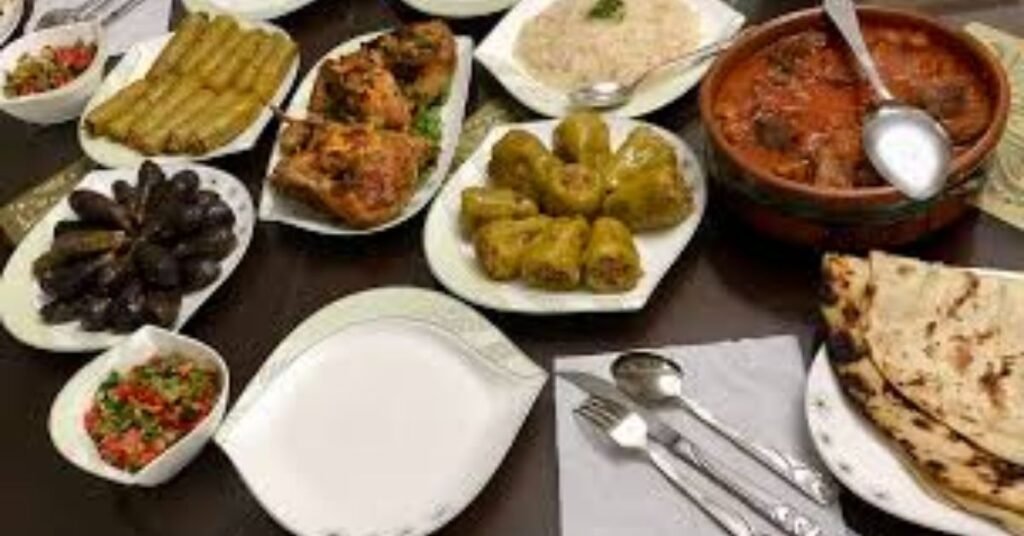Egyptian cuisine ranks among the oldest and most diverse culinary traditions in the world. Rooted in traditions from the times of the Pharaohs, it blends Middle Eastern, Mediterranean, and African influences into a unique culinary identity. From humble street carts to elaborate family feasts, food in Egypt represents hospitality, warmth, and culture.
In this article, we will explore the best Egyptian food, including recipes, traditions, and cultural insights. Whether you’re curious about Egypt’s national dish, everyday meals, or world-famous desserts, you’ll find plenty of inspiration here.
Best Egyptian Food
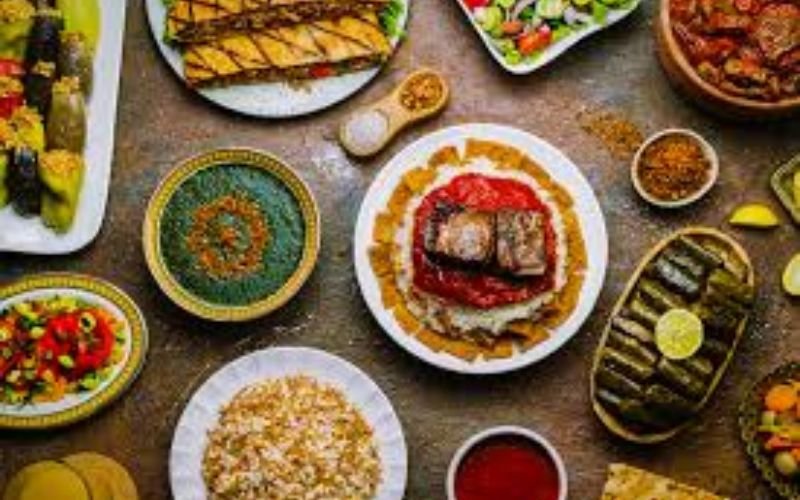
When we talk about the best Egyptian food, we mean dishes that every traveler or food lover should try. Egyptian cuisine is known for being hearty, affordable, and rich in flavor. Families often share large plates, making food a symbol of togetherness.
Some of the best dishes include:
- Koshari, the national dish of Egypt
- Ful Medames, a traditional breakfast made from fava beans
- Molokhia, a nutrient-rich green stew
- Mahshi, stuffed vegetables flavored with herbs
- Umm Ali, a comforting dessert
Recipe: Egyptian Koshari
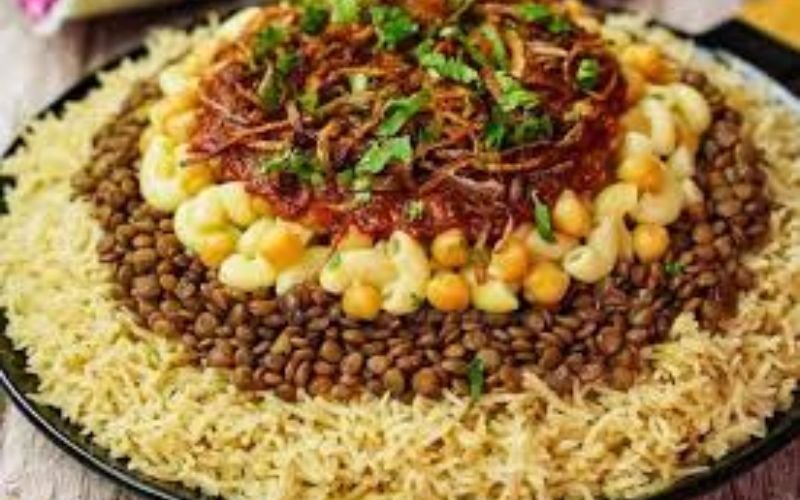
Ingredients
- 1 cup rice
- 1 cup brown lentils
- 1 cup macaroni
- 2 onions (sliced and fried until golden)
- 2 cups tomato sauce
- Salt, cumin, and chili to taste
Instructions
- Cook rice, lentils, and macaroni separately.
- Mix them together in a serving bowl.
- Pour over the tomato sauce and top with fried onions.
- Serve with vinegar and chili sauce.
Tip: For extra flavor, add chickpeas or a dash of garlic vinegar.
Traditional Egyptian Food
Traditional Egyptian food is deeply rooted in Egypt’s agricultural history. Farmers relied on ingredients like fava beans, wheat, garlic, and onions, which continue to be staples today. Traditional meals are simple yet full of flavor, often eaten with Aish Baladi, Egypt’s traditional bread.
Some traditional dishes include:
- Ful Medames (slow-cooked fava beans)
- Aish Baladi (whole-wheat pita bread)
- Lentil soup (a warming winter favorite)
Recipe: Ful Medames
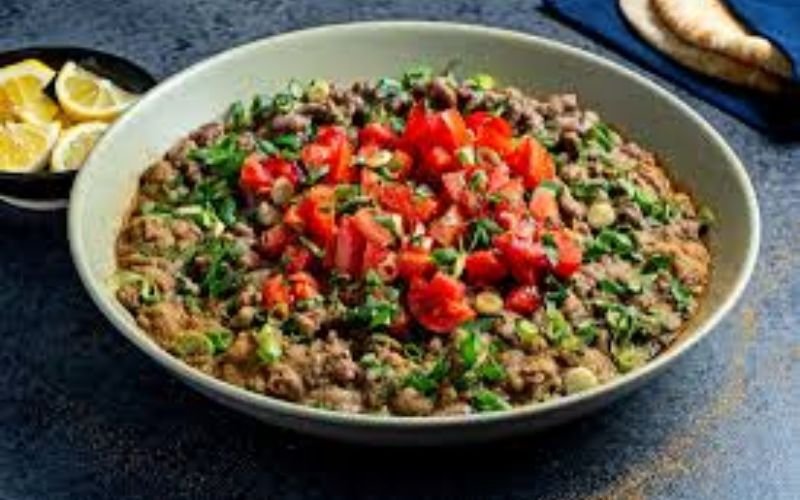
Ingredients
- 2 cups cooked fava beans
- 2 tbsp olive oil
- 2 cloves garlic (mashed)
- 1 lemon (juiced)
- Salt, cumin, chili flakes
Instructions
- Mash beans lightly and heat them with olive oil.
- Stir in garlic, lemon juice, and spices.
- Serve with bread, onions, and tomatoes.
Tip: Ful can be served plain or topped with boiled eggs for a heartier breakfast.
Classic Egyptian Food
Classic Egyptian food refers to dishes that have stood the test of time, prepared in homes and restaurants for generations. These meals are deeply tied to celebrations and family gatherings.
Two classics are:
- Molokhia – a green leafy stew with garlic and coriander
- Mahshi – zucchini, eggplant, or peppers stuffed with rice and herbs
Recipe: Molokhia (Jute Leaf Stew)
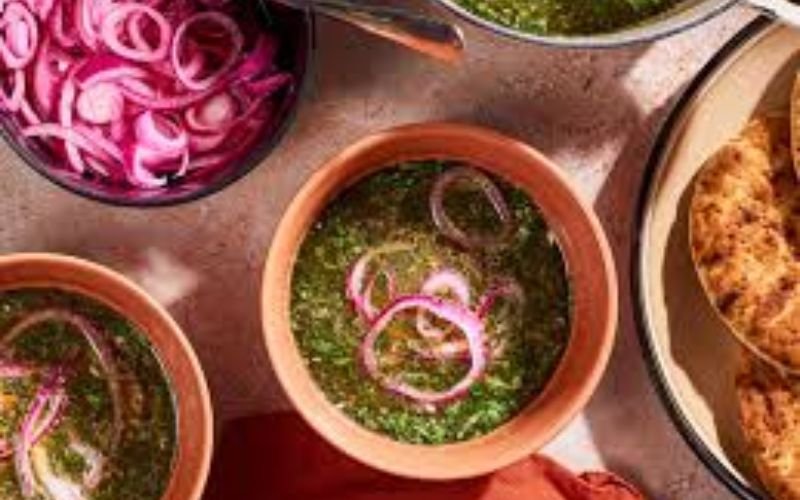
Ingredients
- 2 cups Molokhia leaves (finely chopped)
- 4 cups chicken or beef broth
- 6 garlic cloves (crushed)
- 1 tbsp ground coriander
- 2 tbsp ghee
Instructions
- Heat broth and add Molokhia leaves.
- In a separate pan, fry garlic and coriander in ghee.
- Add this mixture to the soup and simmer for 5 minutes.
- Serve with rice or bread.
Variation: Molokhia can be cooked with chicken, beef, or even rabbit, depending on the region.
Popular Egyptian Food
Street food plays a big role in daily life, making popular Egyptian food accessible to everyone. Locals often grab quick, delicious meals from street vendors, and these dishes have become icons of Egyptian cuisine.
Popular foods include:
- Ta’ameya (Egyptian falafel) – traditionally made with fava beans rather than chickpeas.
- Hawawshi – bread stuffed with spiced minced meat
- Shawarma – grilled meat wrapped in bread with tahini sauce
Recipe: Ta’ameya (Egyptian Falafel)
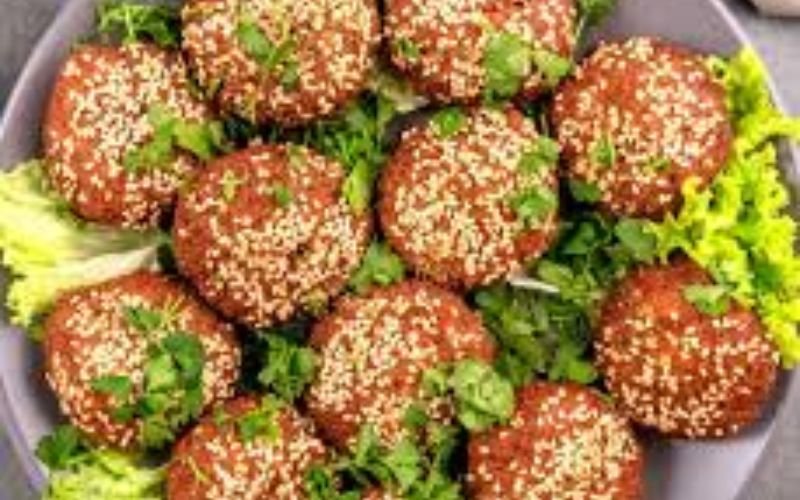
Ingredients
- 2 cups soaked fava beans
- 1 onion
- 3 cloves garlic
- 1 bunch parsley and cilantro
- 1 tsp cumin
- Oil for frying
Instructions
- Blend beans, onion, garlic, herbs, and spices into a paste.
- Shape into patties.
- Deep fry until golden brown.
- Serve with bread, tahini, and salad.
Tip: Unlike chickpea falafel, Ta’ameya is lighter and greener because of fresh herbs.
Famous Egyptian Food
Some dishes have gained international recognition as famous Egyptian food, loved worldwide. Egyptian desserts, in particular, are famous for their sweetness and festive appeal.
Highlights include:
- Umm Ali – a bread pudding-style dessert with milk and nuts
- Basbousa – a semolina cake soaked in syrup
- Kunafa – shredded pastry soaked in syrup and layered with cream or cheese
Recipe: Umm Ali (Egyptian Bread Pudding)
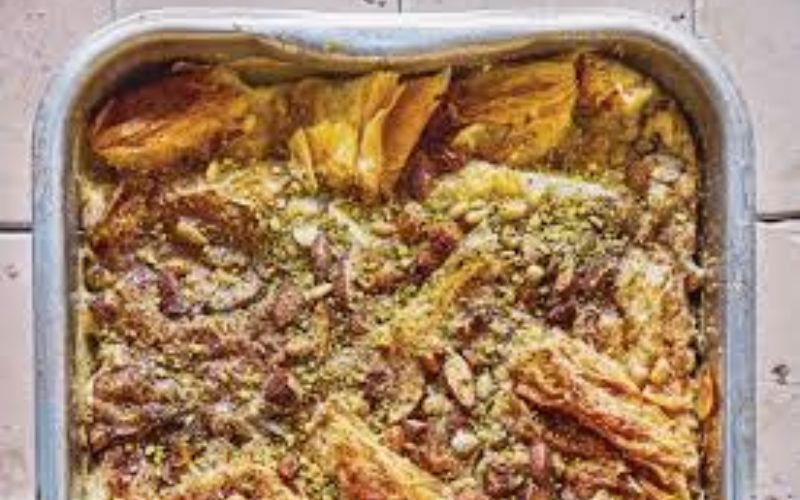
Ingredients
- 1 puff pastry sheet (baked and broken into pieces)
- 2 cups milk
- ½ cup sugar
- ½ cup nuts (pistachios, almonds, raisins)
- ½ tsp cinnamon
Instructions
- Place pastry pieces in a baking dish.
- Pour warm milk mixed with sugar over them.
- Add nuts and cinnamon.
- Bake at 180°C for 20 minutes.
- Serve warm.
Tip: For extra richness, use cream instead of milk.
Authentic Egyptian Food
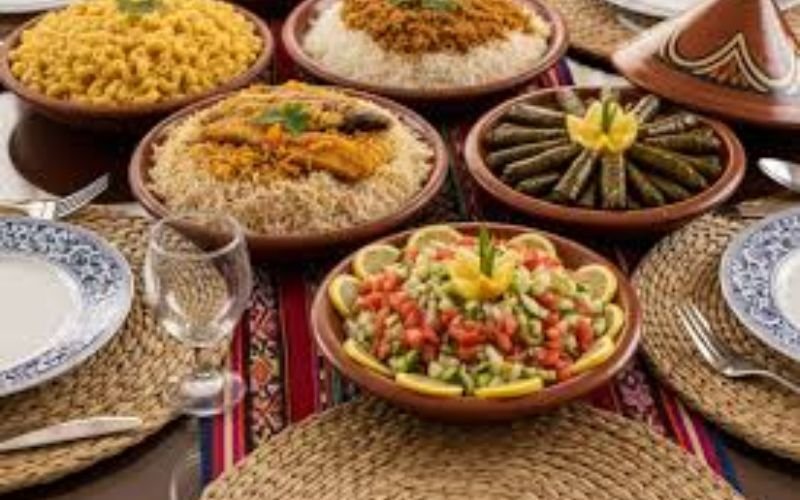
Authentic Egyptian food stays true to local traditions and regional specialties. These recipes are often slow-cooked and deeply connected to celebrations.
Authentic dishes include:
- Hamam Mahshi (stuffed pigeon)
- Feseekh (fermented fish, eaten on Sham El-Nessim festival)
- Roz Bel Laban (creamy rice pudding)
These foods may not be found everywhere but are an important part of Egypt’s cultural identity.
Typical Egyptian Food
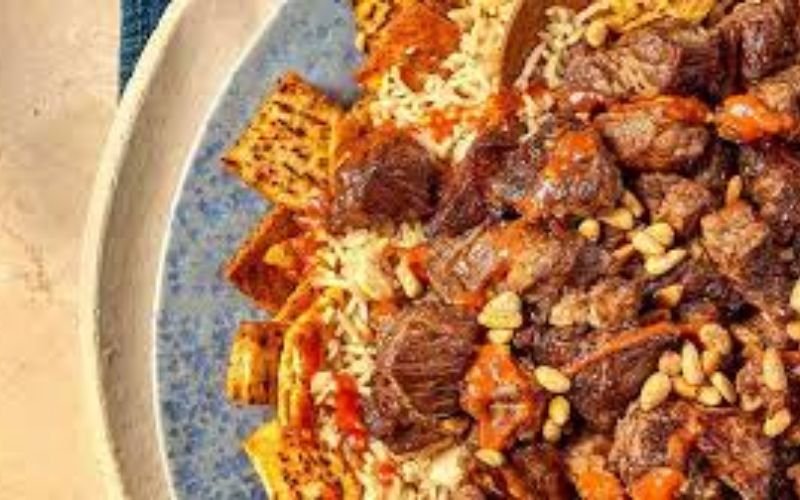
Typical Egyptian food is what families eat every day. Meals are simple, wholesome, and filling.
- Breakfast: Ful Medames, Ta’ameya, bread, cheese, and tea
- Lunch: Koshari, Molokhia, or stuffed vegetables
- Dinner: Bread, salads, cheese, and light stews
This daily food routine shows how Egyptians balance taste, tradition, and affordability in their diets.
Egyptian Food Culture & Dining Traditions
Food in Egypt is more than just nourishment — it’s a way of bringing people together. Meals are usually shared from a large plate, symbolizing unity. Family gatherings, weddings, and religious festivals like Ramadan feature generous spreads of food.
Hospitality is central to Egyptian culture, and guests are always offered food and drink. Street food is equally important, creating a lively food culture where locals and tourists enjoy the same flavors.
Must-Try Egyptian Street Foods & Desserts
If you visit Egypt, don’t miss these:
- Street Foods: Koshari, Ta’ameya, Hawawshi, Shawarma
- Desserts: Umm Ali, Basbousa, Kunafa, Qatayef (stuffed pancakes)
These foods represent the heart of Egyptian culture, available everywhere from bustling Cairo streets to small village bakeries.
Conclusion
Egyptian cuisine is a beautiful mix of history, tradition, and hospitality. From classic dishes like Molokhia to popular street foods like Ta’ameya and famous desserts like Umm Ali, there’s something for every palate.
Whether you cook these dishes at home or experience them in Egypt, you’ll discover flavors that connect people, celebrate culture, and honor centuries-old traditions. If you’re exploring the best Egyptian food, these recipes and dishes are the perfect start to your journey.
FAQs
Q1. What is the national dish of Egypt?
The national dish is Koshari, a mix of rice, lentils, pasta, tomato sauce, and fried onions.
Q2. What is a typical Egyptian breakfast?
A traditional breakfast includes Ful Medames, Ta’ameya (falafel), bread, and tea.
Q3. Is Egyptian food spicy?
It uses spices like cumin and coriander but is usually mild and aromatic, not overly hot.
Q4. What desserts are famous in Egypt?
Famous desserts include Umm Ali, Basbousa, Kunafa, and Qatayef.
Q5. What is the difference between classic and authentic Egyptian food?
Classic dishes are timeless favorites across Egypt, while authentic food highlights regional specialties and traditional cooking methods.
Q6. Can Egyptian food be made at home?
Yes, recipes like Koshari, Ful Medames, and Umm Ali are simple to make with basic ingredients.

